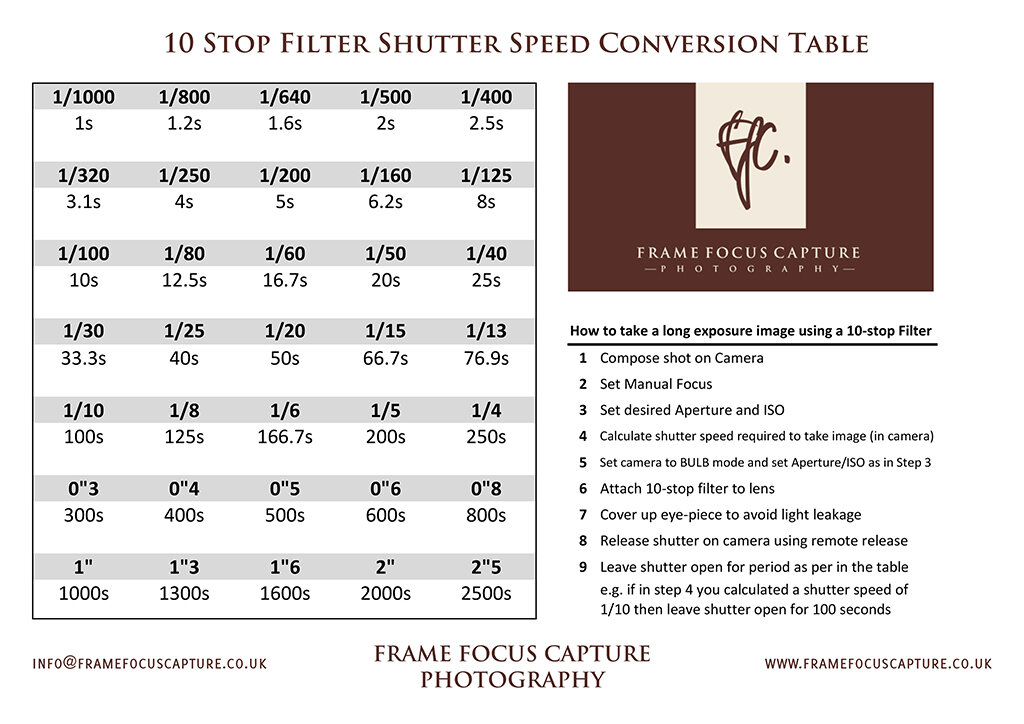Calculating Exposure Times in Long Exposure Photography
I have now been to more photographic clubs/societies than I can remember to present my photographic work, particularly my long exposure images and to discuss my technique so that others can benefit from my experience.
One of the questions I get asked most is how to go about calculating what the exposure time is/will be once the filter is on e.g. the 10 stop filter from Lee or Hitech. Firstly, if you buy the filter, you should get a small printout with it which lists just some of the example exposures but most people either don't notice it or throw it out. That said, those charts are usually for the filter itself and does not take into account if you use other filters alongside it e.g. a graduated filter.
One of the apps I use on my iPhone is NDCalc which was one of the first I came across years ago and did the job for me so have stuck with it and it only cost 69p. There are others these days that do all sorts of fancy stuff but I have had no reason to try them to date so cannot comment but as long as it does the job.
In this particular app, you select how many stops you are calculating for, so in the case of a 10-stop filter, just select the ND 3.0 (1,000x) option and on the left side choose your exposure that you have before applying the filter. The counter at the top will change accordingly to give you your new exposure with the selected filter attached. If you are using an additional filter on top, e.g. a grad filter then just increase the number of stops as required depending on the density of your filter.
If you have other apps that you prefer or recommend, do share in the comments below.For those that do not have a smartphone or prefer to keep something in your camera bag, you are more than welcome to download my free exposure table sheet which you can print off to any size to carry in your camera bag and you can see it gives you a range of exposure calculations as a starting point. It also quickly lists the steps to follow during the technique so that you don't forget anything.
Just remember that when shooting long exposures, if the light is fading you will need to extend your exposure or shorter if it's the other way around.
If you fancy spending the day with me on one of my long exposure workshops learning all the tricks and tips for shooting these types of images then I would love to hear from you.


